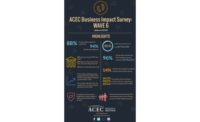
Submetering
and energy profiling were used at this Nebraska office building to
cycle on equipment and save money in energy costs.
When the time came for Morrissey Engineering, Inc., a successful Omaha-based engineering consulting firm, to design its own corporate headquarters, management knew that the structure would have to demonstrate superior energy performance while also showcasing MEI’s broad-based sustainable design capabilities. To that end, a talented team from Sinclair Hille Architects (design concept), Holland Basham Architects (architect of record), and Meyers Carlisle Leapley (general contractor) joined forces with MEI’s own highly capable engineering staff who provided the mechanical, electrical, and technology design services.
NEBRASKA'S FIRST LEED® PLATINUM FACILITY
Referred to as the 4940 Building - after MEI’s Omaha street address - the structure recently became the first facility in Nebraska to achieve LEED® Platinum certification established by the USGBC and verified by the Green Building Certification Institute (GBCI). The LEED green building certification program is the nationally accepted benchmark for the design, construction, and operation of green buildings.As a state-of-the-art corporate headquarters, the all-electric 15,580-sq-ft building features recycling stations, bike storage, showers with changing rooms, and preferred parking for fuel-efficient vehicles and carpools.
Other sustainable design features include low-flow plumbing fixtures, daylight harvesting, occupant-sensing lighting control, a wind turbine for renewable energy production, reflective roofing, and parking lot paving materials that reduce heat absorption.
In addition to extensive use of recycled building materials and the recycling of rainwater through an on-site pond for irrigation, the building’s energy-reducing components have helped MEI trim its utility bill by some 40% compared to a minimally code-compliant baseline structure, achieving in the process 40% lower CO2. emissions; over 45% of total energy usage from renewable sources, 6% of total building energy provided by on-site wind turbine, and 46% lower potable water use.
COSTLY PROBLEM REVEALED BY METERS
Shortly after occupying the building, Morrissey was notified by its local electric utility that the 4940 Building’s demand level had surprisingly exceeded its 50 kW winter demand cap. If it happened again, MEI would be placed on “demand billing” status, which came with an automatic 10% rate hike.Alarmed by the potential increase, Morrissey Engineering profiled the 4940 Building’s electrical usage patterns using E-Mon Energy software. Analysis of the facility’s load profiles, provided by data from electric submeters quickly revealed the culprit, described by Andrew Lang, Morrissey’s lead electrical engineer on the project, as “co-incident power demand during morning warm-up from the night setback condition.”
During off hours, MEI’s BMS reduces temperature settings when the building is unoccupied. In the morning, heating equipment starts up to make the facility comfortable before the occupants arrive. The demand spike was caused by all of the ground source heat pumps (GSHPs) running full bore at the same time, along with the perimeter baseboard heating system. These combined power draws added greatly to the overall load and created higher than anticipated demand for electrical power. The software’s data visualization capability showed power demand during warm-up to be three times higher than normal daytime operation. Lang stated, “the biggest thing for us was getting this information.”
As a corrective measure, Morrissey programmed its BMS to lock out perimeter baseboard heating during morning warm-up, and the company also scheduled the GSHPs to start earlier and to operate sequentially, thus minimizing demand during this peak period. Engineering can also monitor building performance via individual metering of the mechanical systems, lighting, plug load, and wind turbine to ensure that all systems are running at peak efficiency.


